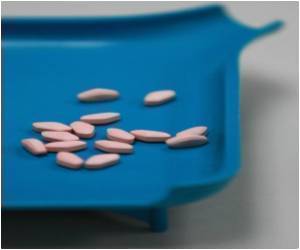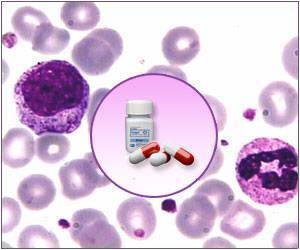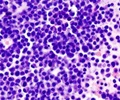A major diagnostic breakthrough in the field of chronic myloid leukemia treatment will help identify patients who are resistant to treatment with Glivec.

- Imatinib (Glivec) for chronic myeloid leukemia has been a great success in cancer treatment over the past two decades.
- However 20% patients are resistant to Imatinib and there is currently no diagnostic method to predict these group of patients.
- High levels of P-glycoprotein in leukemic cells indicate resistance to treatment with Glivec and similar drugs.
- The new test will identify such patients early in treatment with Glivec and provide doctors an opportunity to improve their survival through different treatment strategies.
"The development of the targeted drug Imatinib (Glivec) for chronic myeloid leukemia has been one of the most remarkable success stories in cancer treatment over the past two decades. This is because the drug targets the mutant protein that causes their leukemia," Dr Laura Eadie says one-in-five chronic myeloid leukemia (CML) patients are resistant to the leading treatment of their condition.
The research team based in the Cancer Theme at the South Australian Health & Medical Research Institute (SAHMRI) and the University of Adelaide's School of Medicine – have developed a new test that they believe could be adopted by doctors worldwide.
The study basically looked at the role of a a protein that pumps many drugs including Imatinib out of leukemia cells that is called P-glycoprotein. The team found that some patients had higher levels of P-glycoprotein in their leukemic cells after just a few weeks of starting therapy and these patients were much more likely to develop resistance to treatment with Glivec and similar drugs.
The research team concludes that if the patient's levels of the P-glycoprotein is assessed soon after they start Imatinib treatment for long term response to the drug can be predicted.
"This new test, developed in our laboratory, may provide an opportunity for doctors around the world to change treatment strategies for those patients most at risk of doing poorly on Imatinib before they actually lose response to the therapy," Dr Eadie says.
Dr Eadie is also the recipient of a 2016 Fulbright South Australia Postdoctoral Scholarship. Next month, she will travel to the United States to continue research into leukemia, based at the St. Jude Children’s Research Hospital in Tennessee.
This work will continue her focus on the effectiveness of leukemia treatments and the mechanisms of resistance in patients.
"I hope that by better understanding the key drivers of response and resistance in patients, these research findings will help to inform clinical practice and ensure the best possible chance of patient survival," she says.
The American Cancer Society's estimates for chronic myeloid leukemia (CML) in the United States are that about of the 8,220 new cases that will be diagnosed with CML in the year 2016, 1,070 people of will die of the condition.
About 1 person in 555 in United States will get CML in their lifetime and about 10% of all new cases of leukemia are chronic myeloid leukemia. The average age at diagnosis of CML is around 64 years. Almost half of cases are diagnosed in people 65 and older. This type of leukemia mainly affects adults, and is only rarely seen in children.
This path breaking research publication in the field of chronic myeloid leukemia treatment will give hope to many patients with the cancer and improve their chances of survival.













